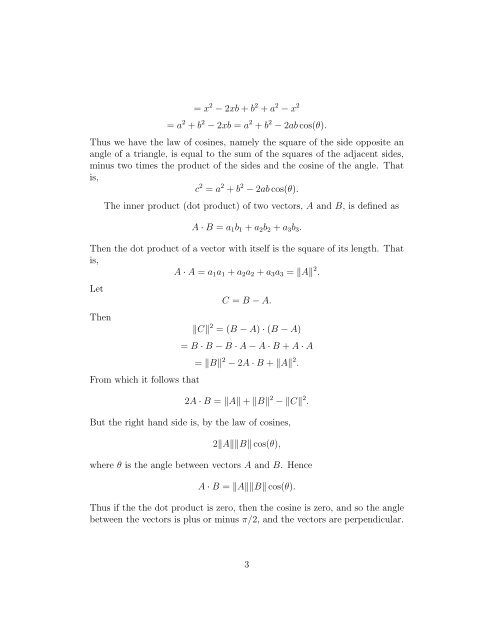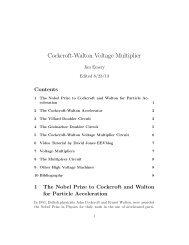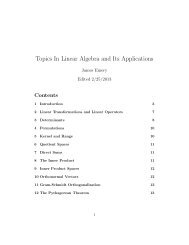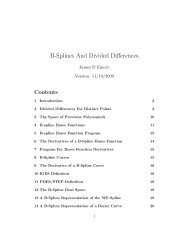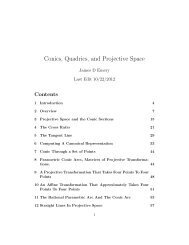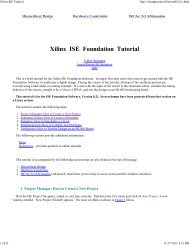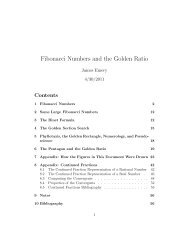Controlling a Rolling Ball On a Tilting Plane - STEM2
Controlling a Rolling Ball On a Tilting Plane - STEM2
Controlling a Rolling Ball On a Tilting Plane - STEM2
Create successful ePaper yourself
Turn your PDF publications into a flip-book with our unique Google optimized e-Paper software.
= x 2 − 2xb + b 2 + a 2 − x 2<br />
= a 2 + b 2 − 2xb = a 2 + b 2 − 2ab cos(θ).<br />
Thus we have the law of cosines, namely the square of the side opposite an<br />
angle of a triangle, is equal to the sum of the squares of the adjacent sides,<br />
minus two times the product of the sides and the cosine of the angle. That<br />
is,<br />
c 2 = a 2 + b 2 − 2ab cos(θ).<br />
The inner product (dot product) of two vectors, A and B, is defined as<br />
A · B = a 1 b 1 + a 2 b 2 + a 3 b 3 .<br />
Then the dot product of a vector with itself is the square of its length. That<br />
is,<br />
A · A = a 1 a 1 + a 2 a 2 + a 3 a 3 = ‖A‖ 2 .<br />
Let<br />
Then<br />
From which it follows that<br />
C = B − A.<br />
‖C‖ 2 =(B − A) · (B − A)<br />
= B · B − B · A − A · B + A · A<br />
= ‖B‖ 2 − 2A · B + ‖A‖ 2 .<br />
2A · B = ‖A‖ + ‖B‖ 2 −‖C‖ 2 .<br />
But the right hand side is, by the law of cosines,<br />
2‖A‖‖B‖ cos(θ),<br />
where θ is the angle between vectors A and B. Hence<br />
A · B = ‖A‖‖B‖ cos(θ).<br />
Thus if the the dot product is zero, then the cosine is zero, and so the angle<br />
between the vectors is plus or minus π/2, and the vectors are perpendicular.<br />
3


